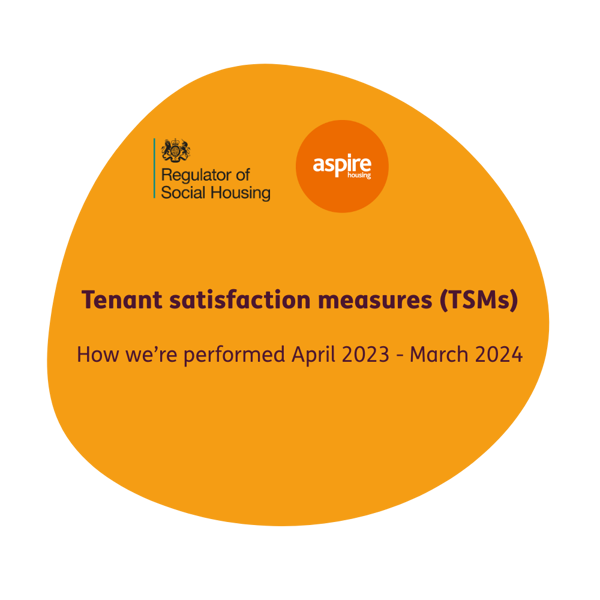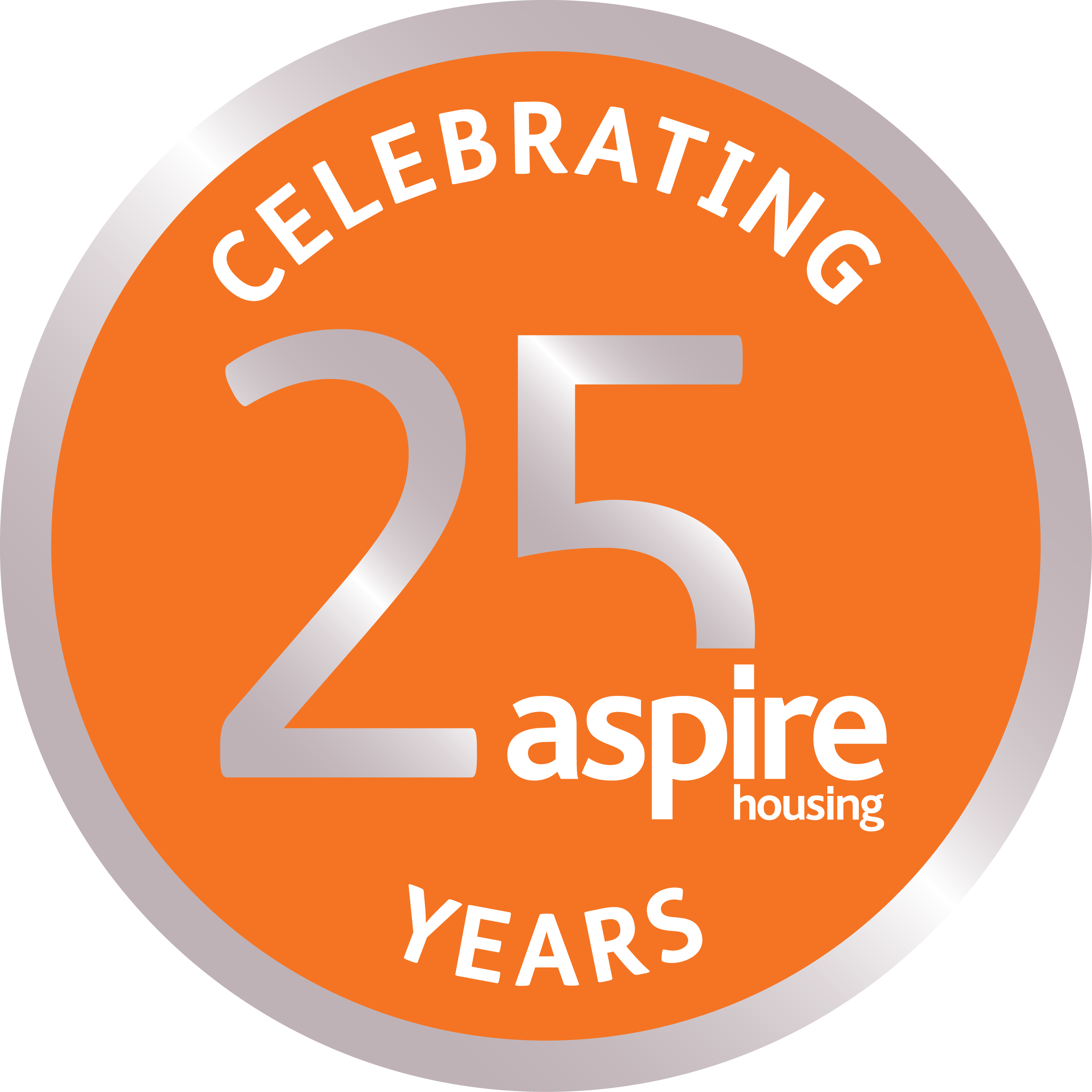
Our first tenant satisfaction measures (TSMs) results, taking us from April 2023 to March 2024, are now available. The 22 TSMs are the new way in which social housing providers like us are being measured by the Regulator of Social Housing (RSH). The tables below highlight both sections of the TSMs covering both what is known as Low Cost Rental Accommodation (LCRA) which are homes that are let at social or affordable rent.
The first table cover the 12 TSMs known as tenant perception measures and are the results of your feedback, views and thoughts on our current service and provision. They will always start with the abbreviation TP (tenant perception).
The second table cover the 10 that are known as Technical TSMs and these are the new way in which we, like all housing providers, measure ourselves against our own targets. They will always start with either NM (neighbourhood management), RP (repairing properties), BS (building safety), or CH (complaints handling).
You will notice that in table two we don't show the previous year comparisons, and that's because this is first time we have acquired these results. This will be the only year there is no comparison.
Tenant perception TSMs (LCRA)
Overall satisfaction
TP01
Satisfaction with repairs
TP02
Satisfaction with time taken to complete most recent repairs
TP03
Home is well maintained
TP04
Home is safe
TP05
We listen to your views and act upon
TP07
We keep you informed about things that matter to you
TP07
We treat you fairly and with respect
TP08
We approach complaints satisfactorily
TP09
We keep communal areas safe, clean and maintained
TP10
We make a positive contribution to your neighbourhood
TP11
We approach antisocial behaviour satisfactorily
TP12
Technical TSMs
Proportion of non-emergency responsive repairs completed within the landlord's target timescale
RP02
Proportion of emergency responsive repairs completed within the landlord's target timescale
RP02
Gas safety checks completed
BS01
Fire safety checks completed
BS02
Asbestos safety checks completed
BS03
Water safety checks completed
BS04
Lift safety checks completed
BS05
Complaints received based on the landlord size (Stage one, per 1,000)
CH01
Complaints received based on the landlord size (Stage two, per 1,000)
CH01
We’re undertaking a new customer satisfaction perception survey from April 2023 to meet new regulatory requirements.
Tenant satisfaction is a key measure of our ‘People First’ strategy, and measures from this survey form part of our corporate KPI suite.
We’re taking a ‘look twice’ approach to our customer satisfaction survey results:
looking once to improve things for the individual customer affected; and a second time to identify wider patterns that can improve things for our business and wider customer base.
As such, we propose to take a sample-based approach rather than a census approach, and a phased approach of surveying continuously across the year, rather than as a one-off annual activity.
We’re taking this approach as we believe this steady and manageable stream of feedback to be the most effective way to comprehensively listen and respond to the feedback received,
providing the most benefit to both the customers responding and our business.
Additionally, although satisfaction statistics are important, we believe the greatest value from these surveys is in uncovering the reasons behind the figures,
understanding, and learning from the customer’s experience.
As such, we’ve chosen to take a primarily telephone-based approach to our surveys, allowing us to build a rapport with the respondents and delve deeper into their perceptions of us to gain additional and actionable insight for improvement.
We also know this to be the most inclusive method to surveying our customers, as we’re missing email and mobile phone data for some of our lead tenants currently.
*1 – Whilst telephone is our primary approach, this will be supported by self-completion methods such as text/email to improve inclusivity and accessibility. More details can be found under ‘How we collect the data in the survey’ section of this menu.
Due to the size of our housing stock, we propose to take a sampling approach in line with the TSM guidance requirements.
| Population | Required Minimum Statistical Accuracy |
|---|---|
| Fewer than 2,500 dwelling units | +/- 5%* |
| 2,500 – 9,999 dwelling units | +/- 4% |
| 10,000 – 24,999 dwelling units | +/- 3% |
| 25,000 dwelling units or more | +/- 2% |
* Where it is not possible to achieve this level of statistical accuracy (for example, providers with fewer than 1,000 dwelling units), employing a census approach is sufficient to meet this requirement.
We utilise software called ‘CX Feedback’ for customer surveys, which allows us to track responses and complete surveys by a combination of telephone, text, and email.
- Invite attempt 1 – phone
- Invite attempt 2 – phone
- Invite attempt 3 – text/email (dependent on available contact data and recorded preferences)
Customers will also have the option of completing the survey via text or email, or requesting a call-back at a preferred time.
It is important that we make participation in the survey as accessible as possible. Identified barriers and solutions:
- Language: Telephone researchers use plain English; written instructions in clear language.
- Visual impairment: Telephone surveys reduce barriers; self-completion surveys support ‘read aloud’ functionality.
- Literacy: Telephone surveys remove this barrier; plain English used.
- Access to digital: Telephone surveys ensure inclusion; alternative options via text or email.
It’s a requirement of the TSM regulation to ensure that the survey results are representative of our customer population.
This includes the following characteristics as identified by the TSM guidance:
- Stock type
- Age
- Ethnicity
- Building type
- Household or property size
- Geographical area
To achieve this, we are taking the following approach:
- Reviewing internal customer data to identify quality gaps and implementing an action plan for improvement.
- Utilising the ‘representation monitoring’ dashboard within CX Feedback to compare respondent demographics to the target population.
- Using this insight to target under-represented groups where needed.
For further details on representativeness, you can view the TSM Survey 2023/24: Representativeness of Sample.
A data protection assessment was carried out in January 2021 for our CX Feedback surveying software and activity.
This will be reviewed every three years to ensure compliance and data security best practices.
Dashboards
The primary method of displaying results is through live data visualisation dashboards. Other visualisation tools may be used to support static reports.
Calculations
The majority of the TSM questions are answered on a 5-point scale. Only responses selecting one of the top 2 options are classified as ‘satisfied’ or ‘agree’.
Those selecting the middle response will be included in calculations, while ‘don’t know’ or ‘not applicable’ responses will be excluded from performance calculations.
Confidentiality
Customer response data is kept confidential, and explicit consent is gathered during the survey for follow-up where necessary.
For telephone surveys, customers are asked at the beginning if they consent to participate. For self-completion surveys, clicking the link to proceed indicates consent.
Data Access
CX Feedback access is secure, requiring individual logins managed by the Business Intelligence team.
Permission settings within the software control user access, ensuring compliance with data security protocols.
Internal Reporting
Results and performance will be shared internally on a monthly basis through Performance Reports. These reports will be:
- Published on the Insight Hub for the entire organisation.
- Escalated to leadership and the Board through standard reporting channels.
Corporate KPIs for 2023/24 have been updated to include TSMs, ensuring transparency and accountability across leadership and the wider business.
External Reporting
As required by the regulator, results will be submitted annually by the Business Intelligence team.
Findings will also be published on the Aspire website and via other communication channels deemed appropriate by the marketing team.
Compliance
This reporting approach aligns with the Market Research Society Code of Conduct.
This compliance framework was last reviewed on 24/04/2024 and will be subject to an annual review.
